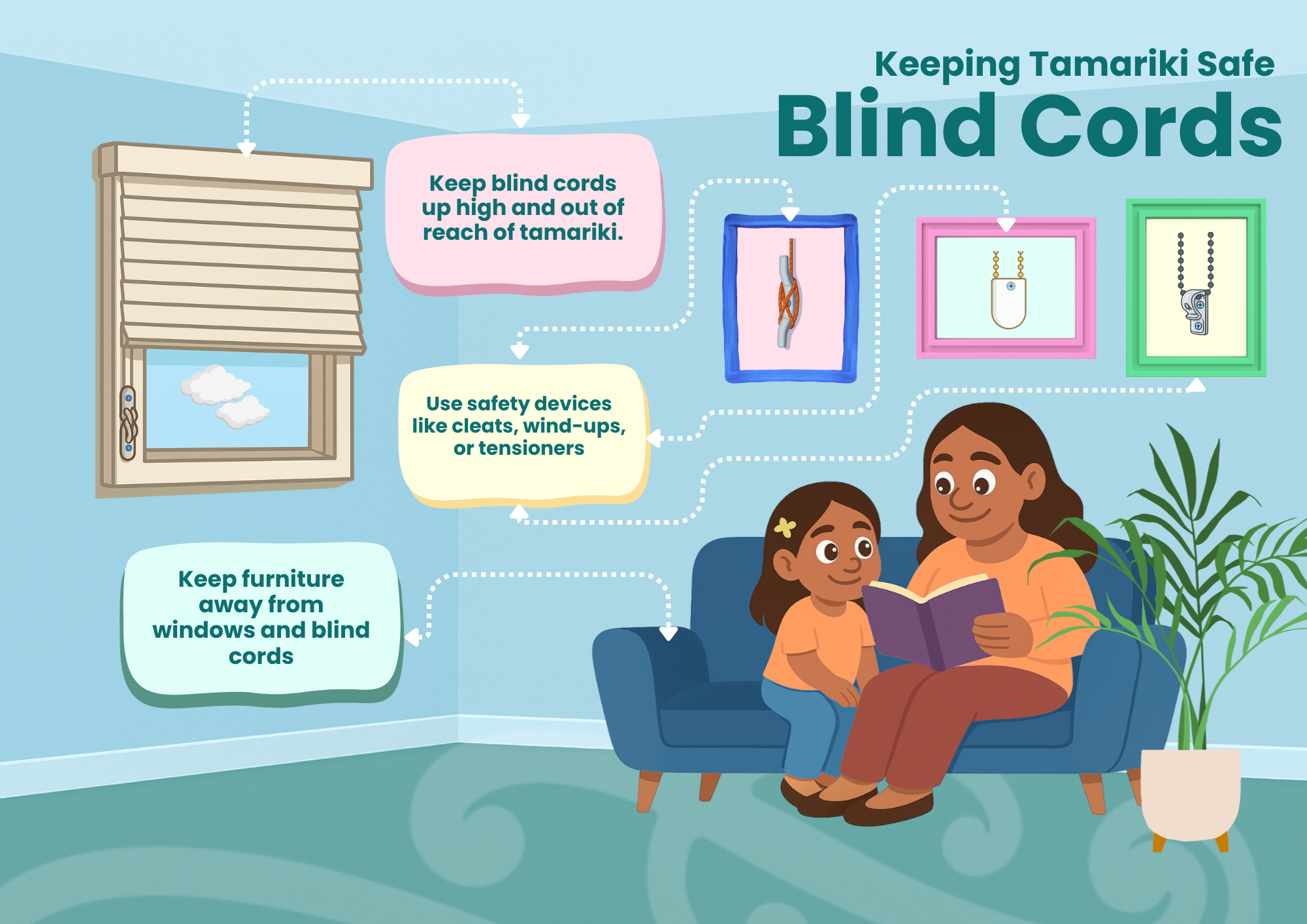Blind Cords Safety
We are proud to share this whānau story featuring Richard & Leah Wolfgramm, who share about a frightening incident involving their son and blind cords. They share just how important it is to identify hazards in the home and create plans to fix these hazards in order to keep children safe.
Richard and Leah Wolfgramm are proud parents to Ria, Eden and Zion aged 7, 5 and 3. With three young children, the Wolfgramms household is always busy. Leah shares about the shift that happened when her children were born, explaining that ‘your life is no longer just about yourself but protecting and raising this new life that has been entrusted to you’. She speaks to the responsibility she has been given to raise her children and just how precious tamariki are. Richard also talks of the importance of giving his kids space to play and be themselves; with this, it's important to remove hazards in the space that could cause harm to children.
Richard recounts the time his youngest child, Zion (3) became tangled in a set of blind cords at the back of their family home. Richard could hear Zion playing and just had a sense that something was amiss. When he went to check on his son, Zion was struggling to free himself from the blind cords that were thoroughly tangled around his neck. Richard says that Zion was actually tip-toeing in an effort to avoid being strangled which was a frightening experience “to see your child choking on something as simple as blind cords.” The Wolfgramms reflect on how they learnt that there are things that we overlook in our homes that can pose a risk to our tamariki. From this they thought about how they can make the home a safer place for their whānau.
What to do if you're renting
Talking to your landlord or property manager around the different options you have for blinds is a good way to choose the safest option for your whānau. There are also different safety devices that you can use for different blinds to make them safer for your children.
You can make the request to the landlord in writing.
What to do if you're a landlord
There are simple ways to protect your tenants from the serious risk of loose blind cords. You can make minor changes to your property to include fixtures such as curtains instead of corded blinds, cord tensioners or cord cleats for corded blinds.
Landlords must not decline if the change requested by a tenant is minor.
Find out more information from Tenancy Services here.
Installation
Although they are an everyday item, blind cords can be a strangulation hazard for young children. There are three different safety devices you can install in your own whare that can help to reduce the risk of strangulation,
Blind Cord Wind-Ups
Blind cords are used to shorten the length of blind cords to keep them out of reach of tamariki. To install follow these steps:
Open the wind-up
Place the cord between the two posts
Slide cords through slots
Snap lid shut
Wind up the cord by turning the cover clockwise until the cord is at least 1600mm above the ground and out of reach of children
To open or close the blinds, pull on the cord above the blind cord wind-up. To unwind, press the tab on the side of the cover and turn counterclockwise. To uninstall the device, take the cover off and remove the blind cords.
Blind Cleats and Blind Hooks
Blind cleats or hooks permanently attach to the window frame or wall which allow you to wrap the blind cords up and out of reach after use. To install follow these steps:
Make sure that blinds are at least 1600mm from the floor
Mark the desired spot on the wall or window frame
Drill a screw into each side of the blind cleat
Make sure the cleat is securely attached
Cord Tensioners
Cord tensioners hold looping blind cords tight to reduce the risk of strangulation. These are used for roller blinds and blinds that create a loop. If the cords are installed below 1600mm from the floor, they need to be installed in a way that doesn't allow tamariki to remove the cords from the tensioners. To install follow these steps:
Thread the chain loop through the safety device. You can do this by opening the bottom piece of the device below the screw hole which will let you insert the chain.
Pull the safety device down and make sure it sits flush against the wall
Mark where the screw will sit
Pre-drill your screw hole
Screw the device in place
Check chain is tight but still moves through device
Regardless of whatever safety device you have installed, it's important to keep beds and furniture away from windows and blind cords. This helps reduce the chance of tamariki climbing onto furniture and being strangled by blind cords.
Thank you to the Wolfgramm family for sharing your experiences with us to help inform other families of the hidden dangers of blind cords.
Download our Blind Cord Safety Guide here

